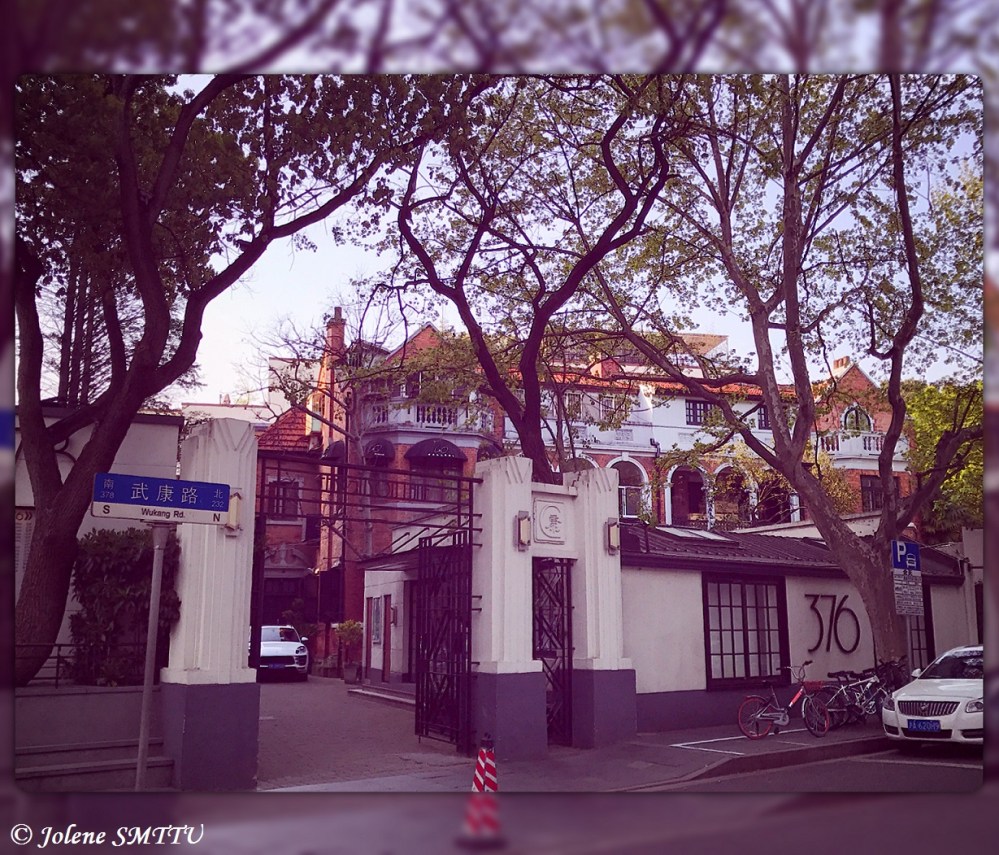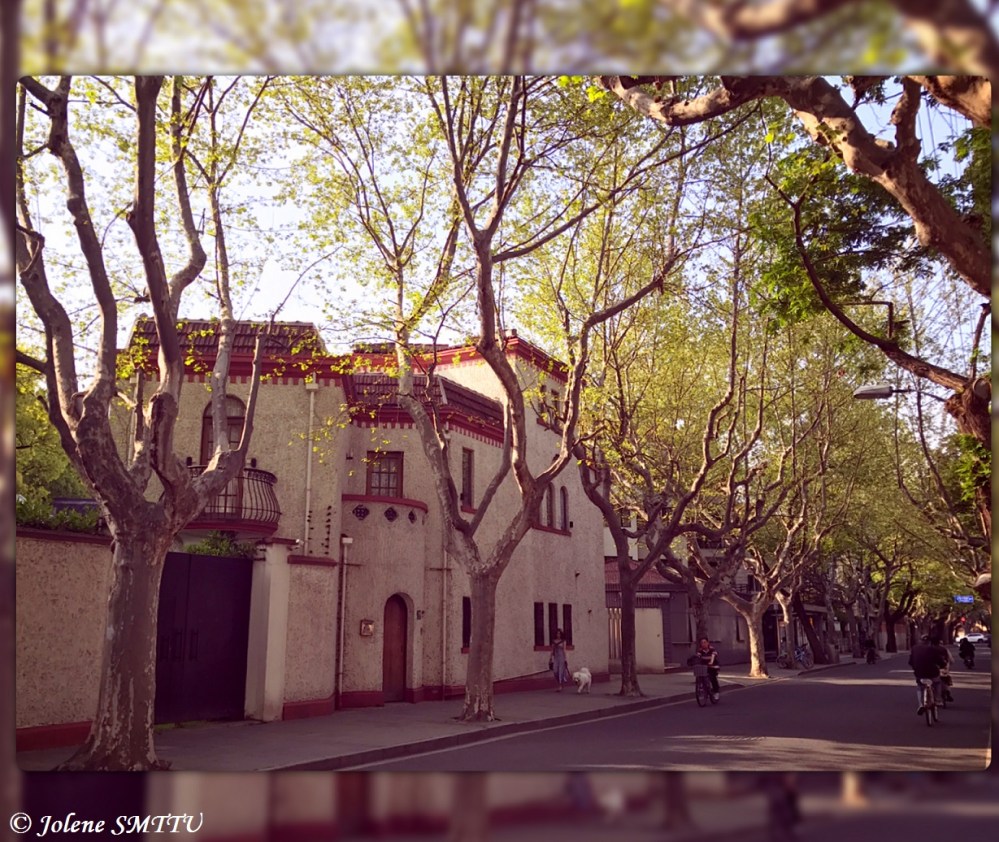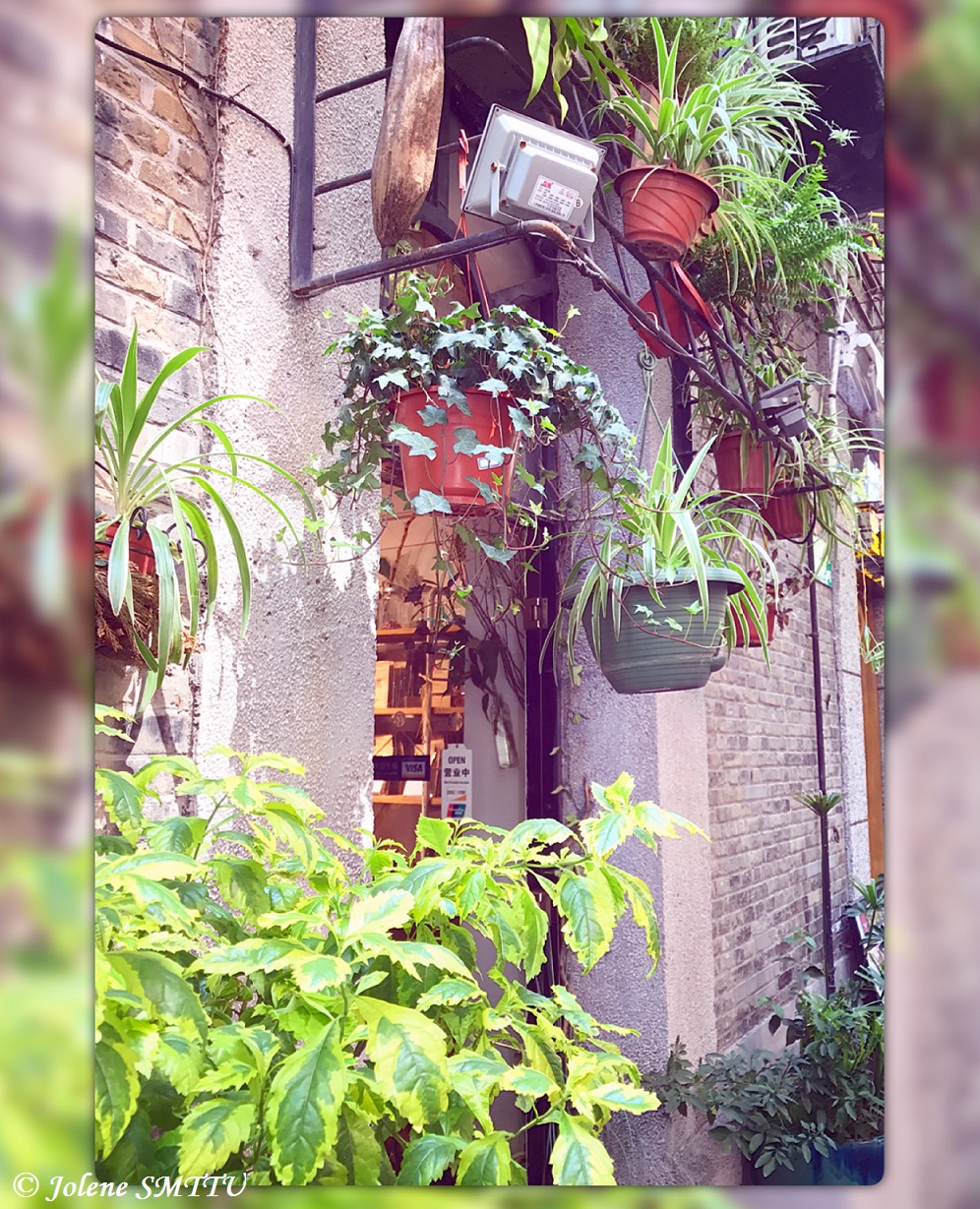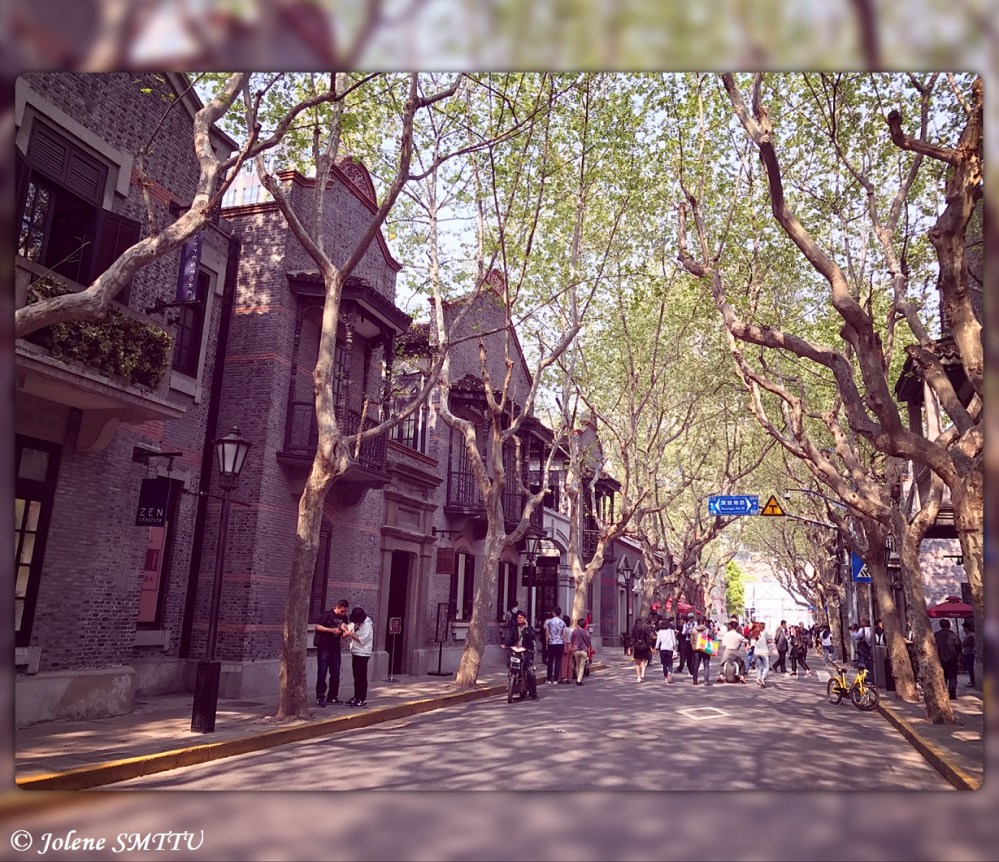Out of the corner of my eye I caught a commotion, the clumsy shuffling of heavy white tassel, the outstretched hand of a tuxedoed man, and the frantic flashes from a camera crew less than ten feet away. I was momentarily disoriented. I wondered who would have been more peeved: the lady in white, who found an unwelcome third wheel in her wedding photography; or me, who had my reverie unceremoniously broken into.
I raised my eyes to the backdrop, and realised the root of the problem. I was standing at one of the most photographed landmarks of “Old Shanghai”.
It was an unseasonably warm day in Shanghai, lending itself to a balmy evening. The perfect evening for a stroll. I had a couple of hours to kill in between my earlier appointment and my next obligatory family dinner. Feeling rather nostalgic that the Shanghai emblazoned in my childhood memories has more or less been overtaken by a labyrinthine concrete jungle, I set out to seek the comforts of the Old Shanghai.
Wukang Road (武康路)
And thus I found myself at the foot of Wukang Mansion, the cover girl of French Renaissance architecture in Shanghai and one of the most photographed landmarks. Bookending the southern aspect of Wukang Road, at the intersection of Huaihai Road (淮海路), the building was completed during the city’s heydays in 1920s and represents the first veranda-style apartment in Shanghai. The building is formerly known as the Normandie Apartments, a nod to the World War I-era battleship Normandie, with its structure protruding like that of a seafaring vessel.

For those of us reminiscing the times of old (or exploring the city for its true colours), Wukang Road is sure to be a sentimental favourite. I grew up in a district not too far from here. Twenty-odd years have passed and it is one part of the city where, thankfully, not much has changed.


A relatively narrow one-way road centrally located in Shanghai, it largely remains true to its former western influences (predominantly French and Spanish) and is a leisurely 30-minute stroll from one end to the other. Well-preserved architectural wonders and the many Chinese parasol trees that adorn the streetscape have long underpinned the road’s popularity as a major (free!) tourist destination and historical open-air museum.

Venturing a little further, adjacent roads such as Julu Road (巨鹿路) and Hengshan Road (衡山路) also pay homage to the city’s rich European influences. On this weekday evening, I was as much a tourist in my own hometown as the next traveller, watching throngs of men rushing home to their wives and dinners, and tiger parents toting their kids to their next extracurricular.

As if the residential streets of Old Shanghai weren’t enough to satiate, the next day dawned with explorations of lively commercial districts bearing the same cultured ambience.
Shanghai Tianzifang (上海田子坊)
Tianzifang, tucked away off Taikang Road (泰康路), is a small but vibrant, artsy precinct. Originally constructed in the 1930s with Shikumen-style (石库门) residences (an architectural style unique to Shanghai), it has been significantly revamped in the late 1990s and is now buzzing with bars, cafes and a maze of stores selling everything from traditional handiworks to DIY teddy bears…


Shanghai Xintiandi (上海新天地)
A neighbourly 1.5km away (~1 mile) on Madang Road (马当路) lies the stylish Xintiandi pedestrian / heritage / shopping / entertainment mecca. Xintiandi boldly boasts the perfect marriage of the Old Shanghai with its aspirational, modernist persona. Within the traditional walls and tiles of Shikumen-housing revealed a completely new world of internationally acclaimed galleries, boutiques and restaurants and bars.


It was the old charm that continued to draw me back to the city that reared me, and I was grateful for this journey down Shanghai’s memory lane. To remember what was, and to welcome what will be.
The Liuli China Museum is impressive! O_O I had never seen it before. I also wouldn’t say no to a stroll down Wukang Road. ^_^
Thank you! It’s not everyday that I see a building with such interesting plumage…
Indeed!
Beautiful photos. Makes me want to go visit this location – love the architecture.
Thank you, it is quite homely… 😊
Beautiful and timeless photos of Shanghai!
Thank you! ☺️
Wow such a beautiful place!
Thanks Rachel! It holds great sentimental value…
Someday I hope to be able to visit Shanghai!!
Get your company to sponsor you, and then I can see all the weird things which I’ve never had the time to look out for. China (by that I mean Shanghai) has just as much potential as India. 😊
Finally got to China only recently. Spent a day and a half in Shanghai. I enjoyed it, but maybe it would have been helpful to have seen your post first.
That’s great! Shanghai is a bustling metropolis these days, well worth a visit. If you get a chance to spend a little longer there then this would offer a slightly off the beaten track approach. Glad you enjoyed the city! 🙂
Marvellous! I have to take note of these places when visiting Shanghai in the future. Glad to know a 上海人 🙂 I often saw the photos of Pudong or the Bund but did not know such lovely roads exist. I visited Shanghai once but very long time ago. I could not remember anything, except the Oriental Pearl Tower. My parents and I waited for hours just to know that it was too foggy, we could go up but could not see anything 🙂
Haha, you know what, us Shanghainese are everywhere. Everywhere except Shanghai. 😆
Of course, if a tourist was there for a day or two then the bund and all that is a must. But if you are there for longer, the smaller streets are a better reflection of the real Shanghai. And yes, the haze/fog/pollution can always be in the way.
Oh, I think I need at least 3 days to see the ity. The last time I went there with a tour. So I barely had time. What is the specialties of Shanghai? 🙂
Yes you would need that time for a bit of “cultural immersion”. It really has everything you would expect from a major global city. By specialties, if you mean food-wise, then we have plenty!! A wide range of snacks from those steamed soupy buns (小笼包), fried buns (生煎), to smelly fried tofu (臭豆腐), to main dishes such as steamed crab (大闸蟹), braised pork (红烧肉) and rice cakes (年糕). I’m missing all those just thinking about them……
Reading about them makes me drooling 🙂 Most of them sounds so delicious… except the stinky tofu. I know it is tasty but the smell is too much for me. I have a quite sensitive nose, so I cannot try dishes that have strong odor. Durians and fermented shrimp paste (a Vietnamese speciality) are “no go” for me as well 🙂
Shrimp paste is yum! You need to have colds/blocked noses more often 😉
Thanks for the share – am sure few tourists would get to see them. There is something about old buildings – whether it’s pure nostalgia or a sense of history I’m not sure – that makes me want to spend time getting to know them. Looks like a lovely place to be.
Thanks Vibha. Like you, I’m never quite sure whether it’s anything more than nostalgia that draws me back. Perhaps it is the grandeur of a place steeped in history, or the pace of development in a burgeoning city such as Shanghai. Indeed, parts of it are lovely and definitely worth exploring if you get a chance. 😊